
The Mini Dinky range was introduced by Meccano (owned by Lines Brothers at the time) in 1967 or 1968 in 1:65 scale. They were made by subcontractors in Hong Kong to compete with the popular Matchbox Toys.
Two Formula 1 cars were also in the range, made by Best Box (Bestbox) in Holland (later called EFSI), as well as six construction equipment made by Universal Industries in Hong Kong.
The construction pieces were to a much smaller scale and might have been manufactured first by Mercury Toys of Italy and Mercury Industries of Montreal, Canada. These six might have been part part of a larger range called Lit’l Toy, and later sold by Gibbs Metal Miniatures. After that, the six were released as Mini Dinkys made in Hong Kong. Finally, Universal Industries sold them or similar copies as Kidco, Champ of the Road, or the Minibox Series. The Universal versions were made in Hong Kong and do not have the Dinky branding on the castings.
The various ranges of the construction vehicles show differences with the castings suggesting that no “clone” casting could have taken place with the Mini Dinky tooling and that the Mini Box, Kidco, etc. could be just general copies. Research is not as complete on these as it should be.
The construction vehicles have always been the harder models to establish correct tool use and production time-lines for and will remain a mystery for some time to come but eventually as more collectors are made aware of these models it will be unravelled by someone!
The range came in small, red plastic boxes representing garages with large sections of clear windows. The front could be opened like a garage which gave this range a unique feature compared to the typical cardboard box or blister pack. These plastic garages were specific to each model because the car’s name and catalog number were printed on one end in yellow.
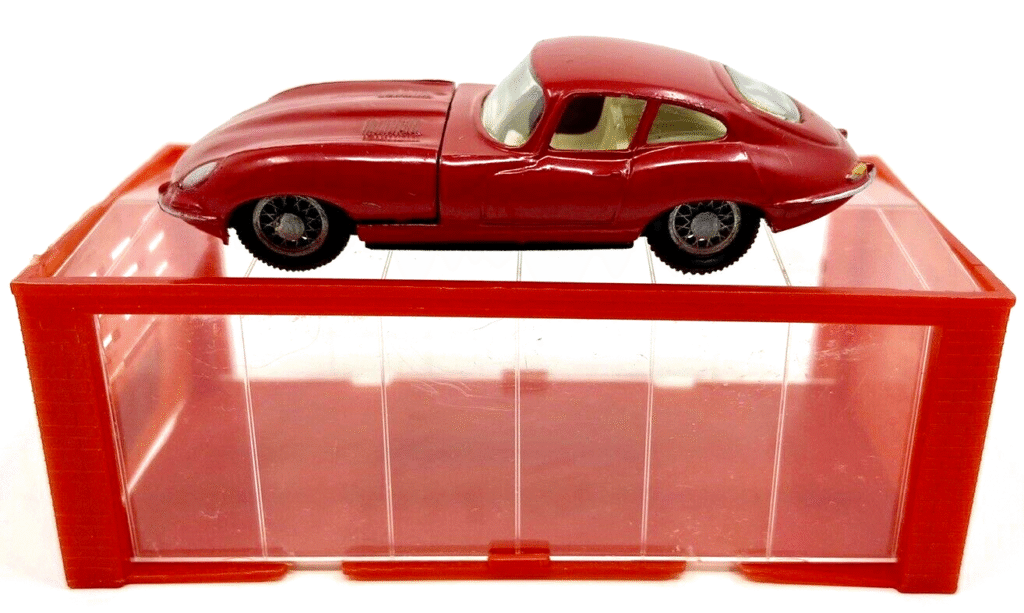
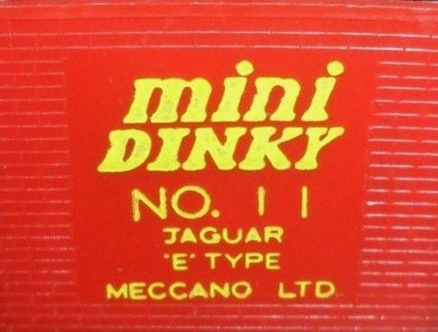
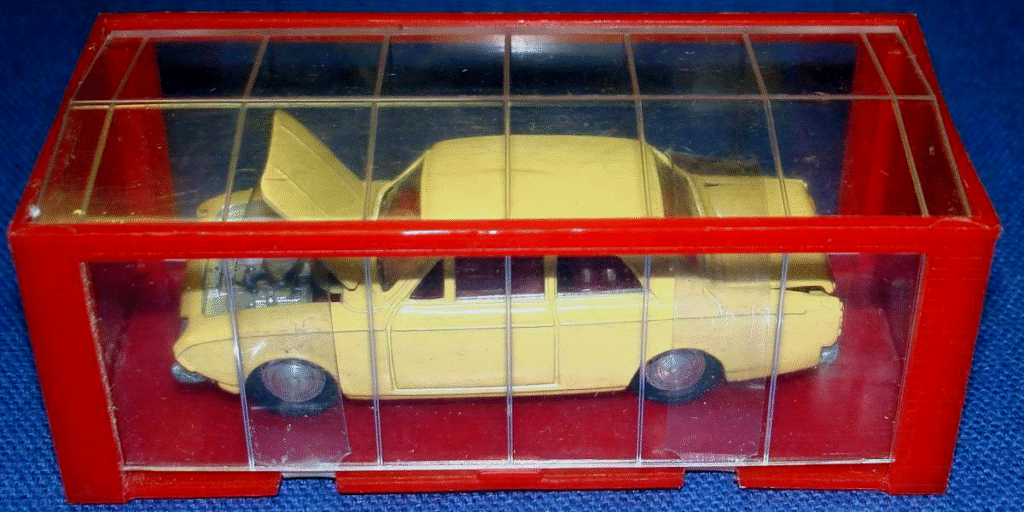
Images: David Green
Mini Dinky catalogs or brochures at the time showed many planned street car models that were never released, so the following is the list that actually made it into production. If you have any others in your possession, please let me know!
- 10 Ford Corsair
- 11 Jaguar E Type
- 12 Corvette Stingray
- 13 Ferrari 250 LM
- 14 Chevrolet Chevy II
- 16 Ford Mustang
- 18 Mercedes Benz 250 SL
- 19 MGB
- 20 Cadillac Coupe De Ville
- 21 Fiat 2300 Station Wagon
- 22 Oldsmobile Toronado
- 60 Cooper 3L Formula 1
- 61 Lotus 3L Formula 1
- 94 International Bulldozer
- 95 International Shovel
- 96 Payloader Shovel
- 97 Euclid R‑40 Dump Truck
- 98 Michigan Scraper
- 99 Caterpillar Grader
Production of the Street Cars
There is evidence that the production took place in two batches, because some models have bare metal baseplates while others have bright plated baseplates. HKI (Hong Kong Industries) had made toys for The Lines Group in the mid-60’s, Sindy dolls starting in 1968, and the six 1:42 “Hong Kong Dinky Toys” of US cars from 1965.
HKI were contracted to make the Mini Dinky models, but the quality proved to be quite low with inferior metal mixes and poor construction. Some have poor paint jobs and show overspray when two colors were used.
If you study the models with bare metal baseplates, you can see that many examples suffer from metal fatigue; these were made by HKI (Hong Kong Industries).
The contract was handed over to Zyll Enterprises (parent of ZEE TOYS and ZYLMEX) for continued production with plated baseplates. These are the better built and better quality versions of the Mini Dinky models.
The name on the baseplate has been cast in four ways:
- “MINI-DINKY” — upright with a hyphen
- “MINI-DINKY” — italicized with a hyphen
- “MINI DINKY” — italicized without a hyphen
- “MINI DINKY TOYS” upright with no hyphen and “TOYS” added
The earlier type is italicized text with a hyphen; this is how it is presented on technical drawings of these models, dated 1967. These first models, “the first batch”, are likely to have been made by HKI but proved to be of poor quality and so production was switched to Zyll, hence the “chrome” effect baseplate.
All R&D was done in Canterbury at the MINIC LTD factory on Market Way, Canterbury, Kent. The factory was responsible for much of the “MINIC” branded toys, including the Sindy dolls for PEDIGREE and the MINIC MOTORWAY slot car system among others.
Top Gear
After the Mini Dinky production runs were over (in 1970, or the early 1970s), some or all the castings appeared with speed wheels as the Top Gear brand. The Mini Dinky range that became Top Gear models had their baseplates retooled to allow their use on the Johnny Lighting (JL) “500” race sets in 1969. At that time, JL’s were made by Topper Toys (1969–73) who had a marketing and distribution agreement with Tri-ang Toys in the UK. Tri-ang was owned by Lines Brothers, who had bought Meccano, and hence Dinky Toys, in 1964.
The Johnny Lightning models had a black rectangular hole near the front axle, for a catapult mechanism in the track that shot these models along quickly. The model below is the “Top Gear” version of the “Mini-Dinky” Oldsmobile, with the same rectangular hole near the front axle.
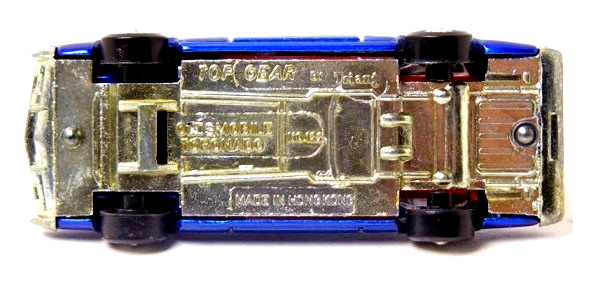
I only know of five Top Gear models based on the old Mini Dinkys, all designed to be run on the “Johnny Lightning” track system.
The Models
10 Ford Corsair
Two colors of the Corsair are shown. A collector is known to have a dark red Corsair marked “Car * Lines” instead of “Mini Dinky” as the top line of text on the base, but still marked made in “Hong Kong for Meccano LTD”!
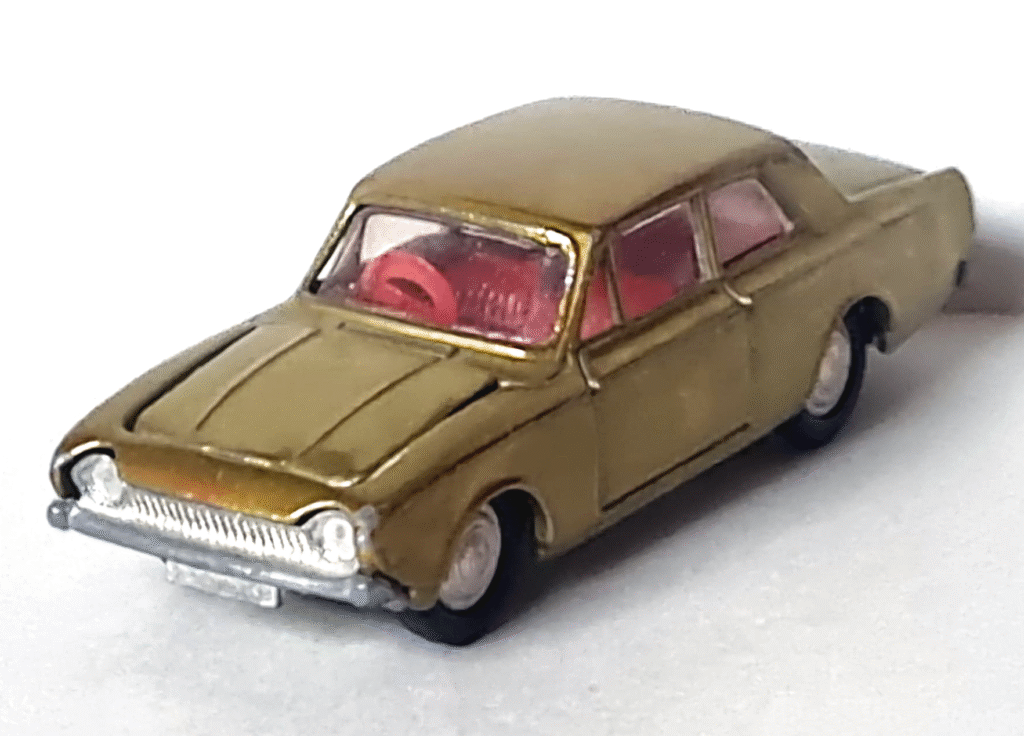
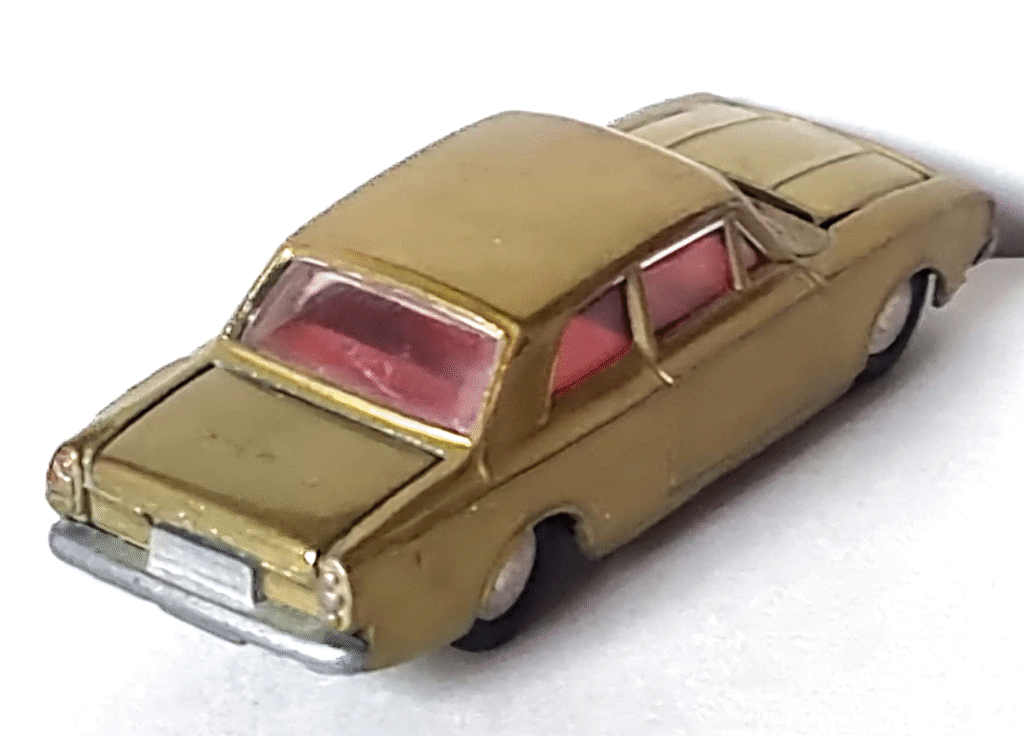
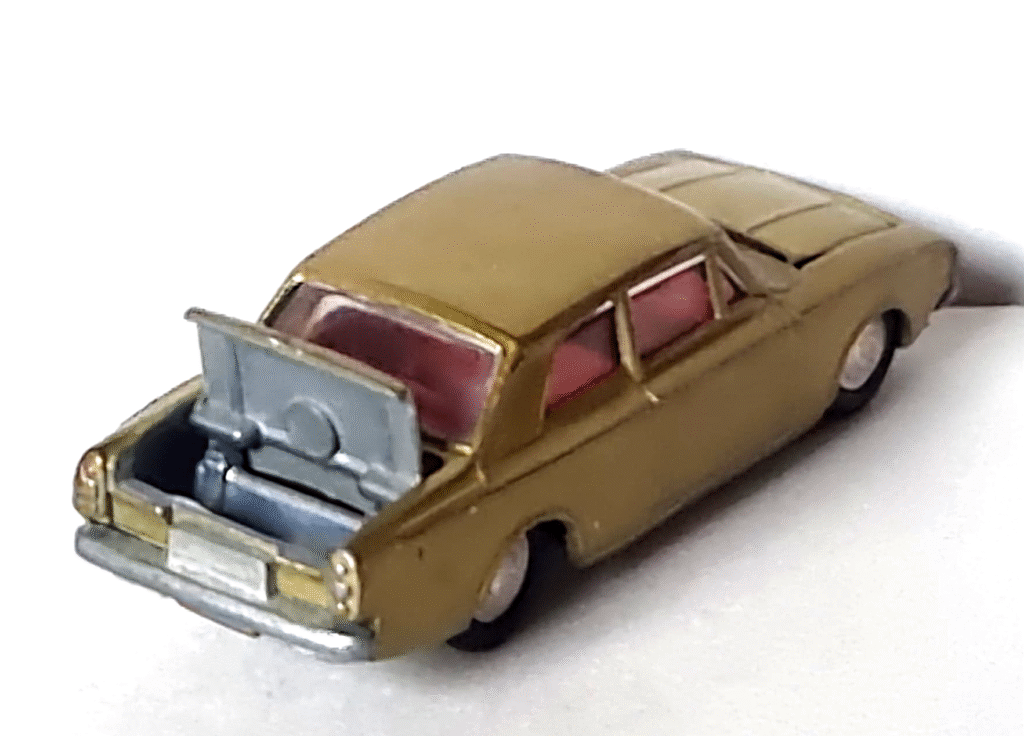


11 Jaguar E Type
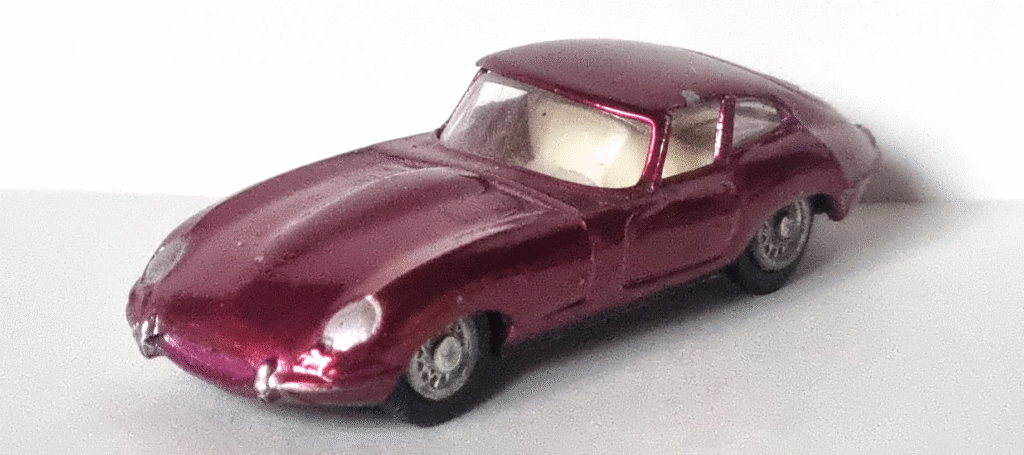
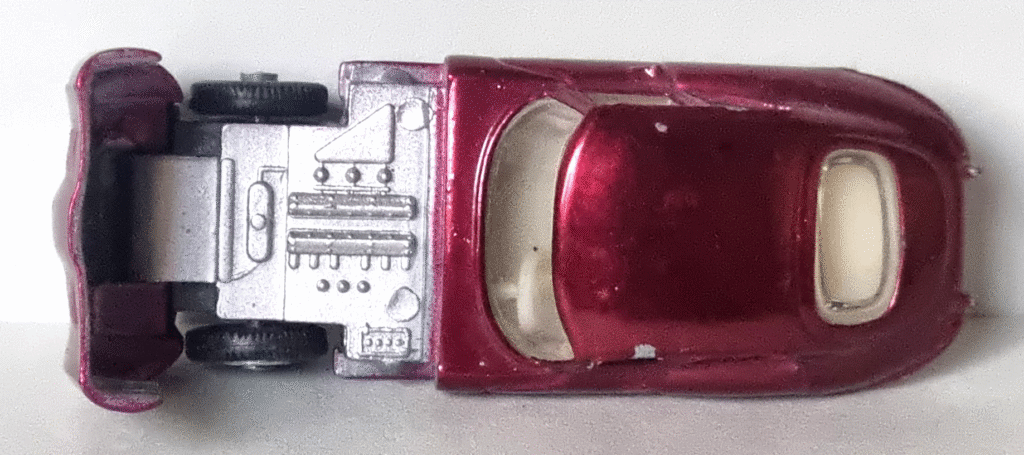

12 Corvette Stingray
Two different wheel styles are shown below. Also, a casting difference has been identified by Tick on Planet Diecast on the Corvette concerning the body casting below the rear bumper. The baseplate photo shows the casting filled in more fully on the right under the bumper than on the second variation.

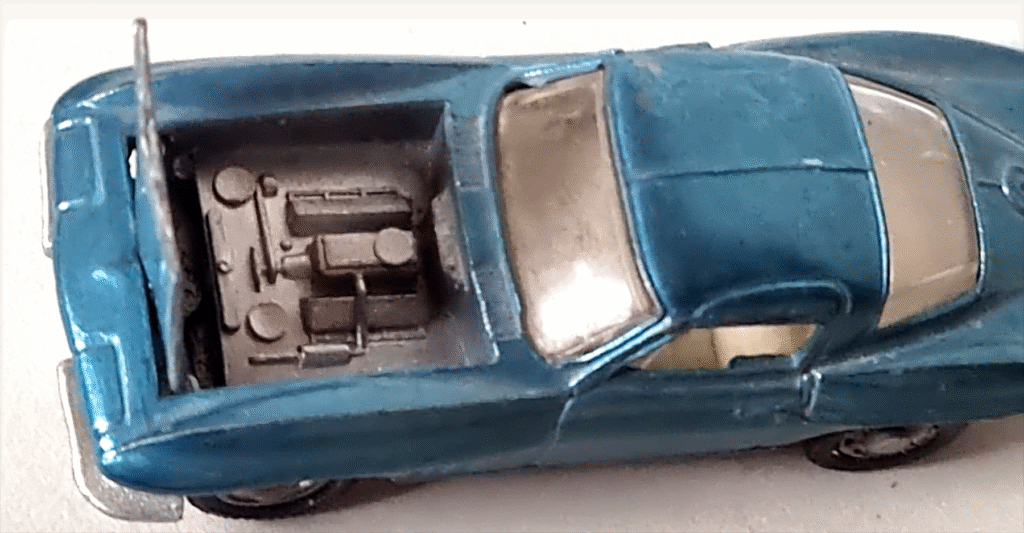
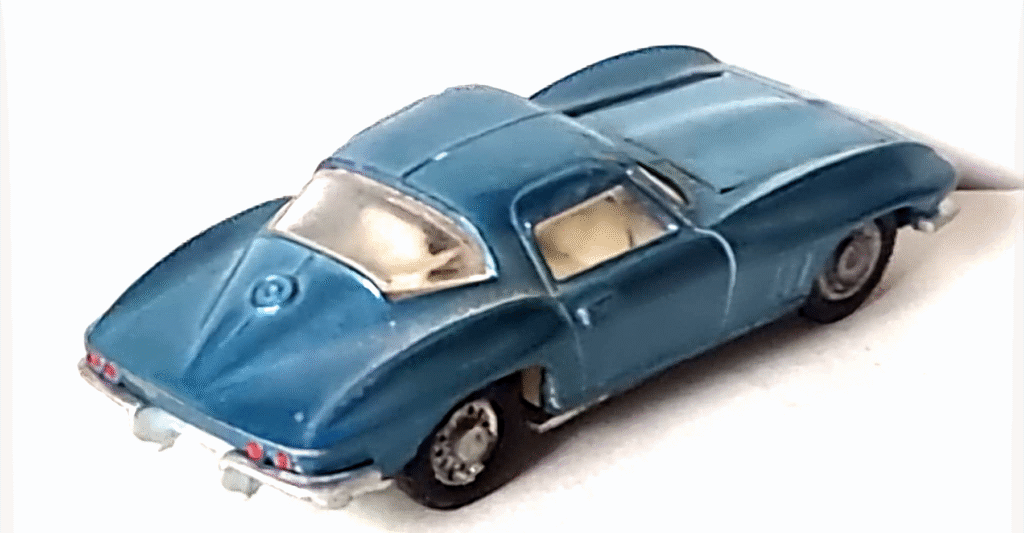

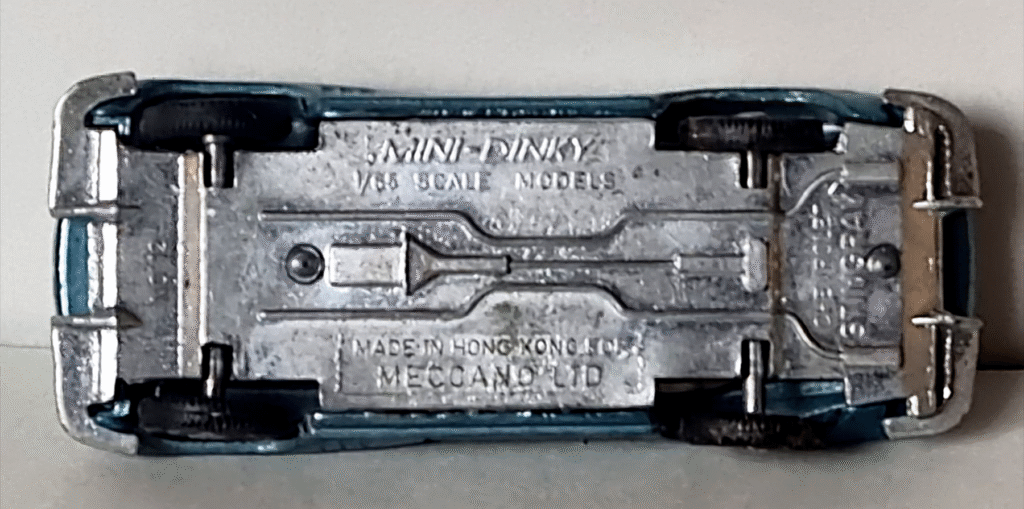
13 Ferrari 250 LM
The Ferrari has an unusual black baseplate compared to the other cars in these photos.

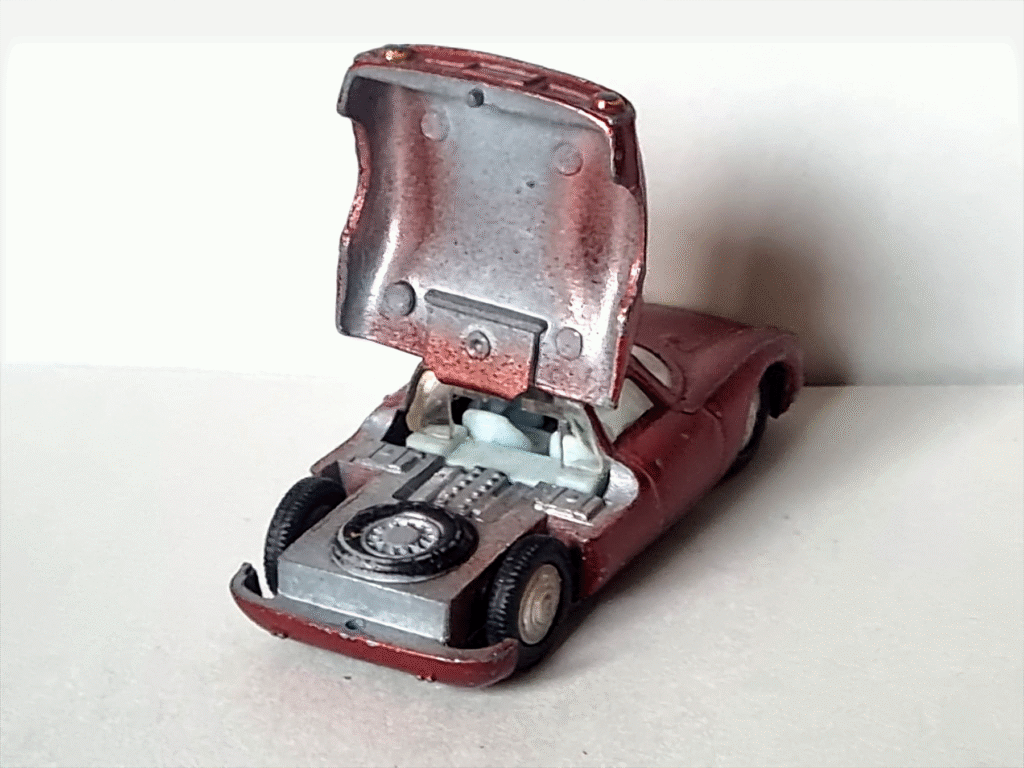

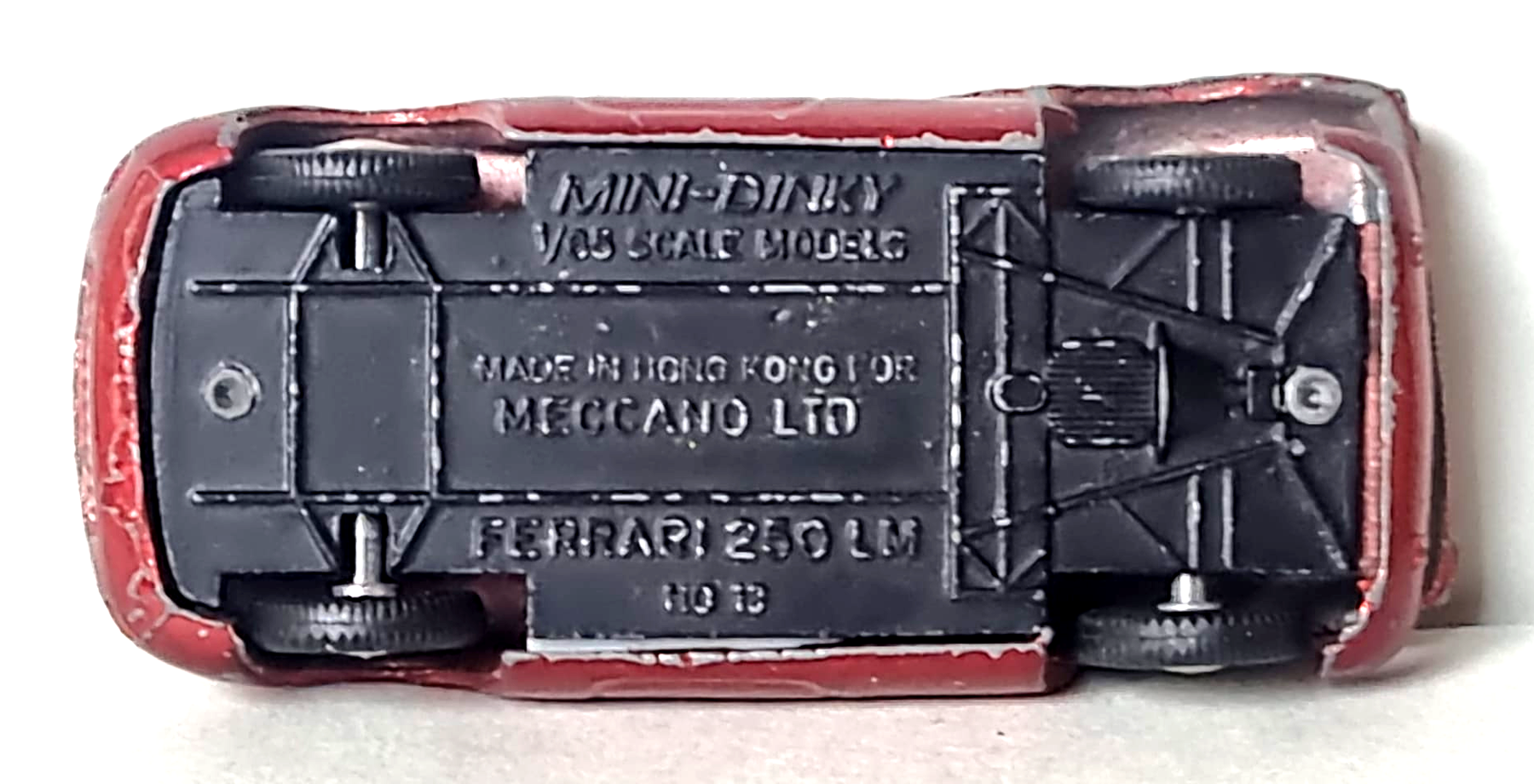
14 Chevrolet Chevy II
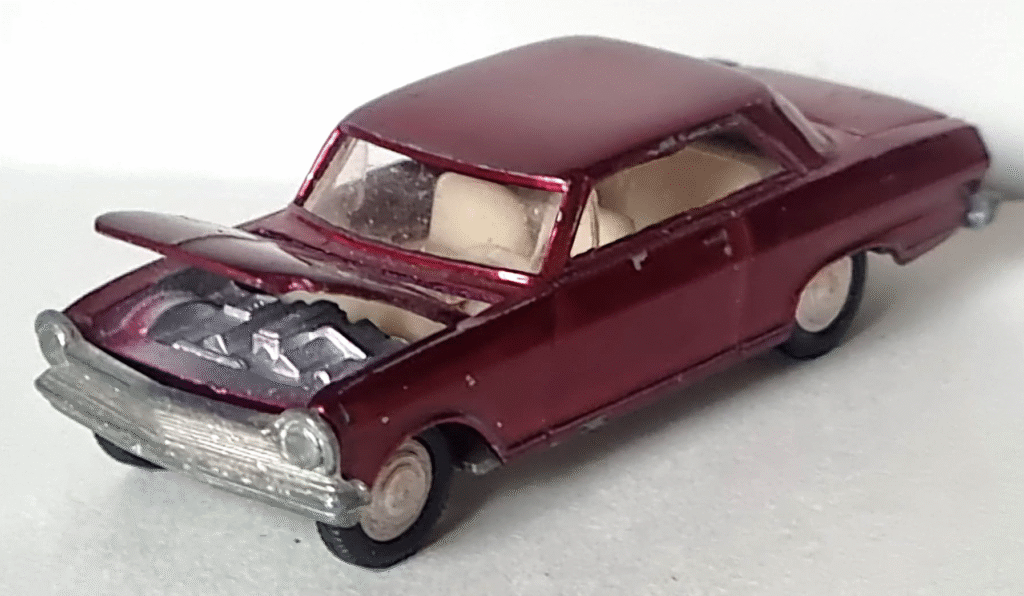

16 Ford Mustang
Two colors of the Mustang fastback are shown, both with different interior colors.
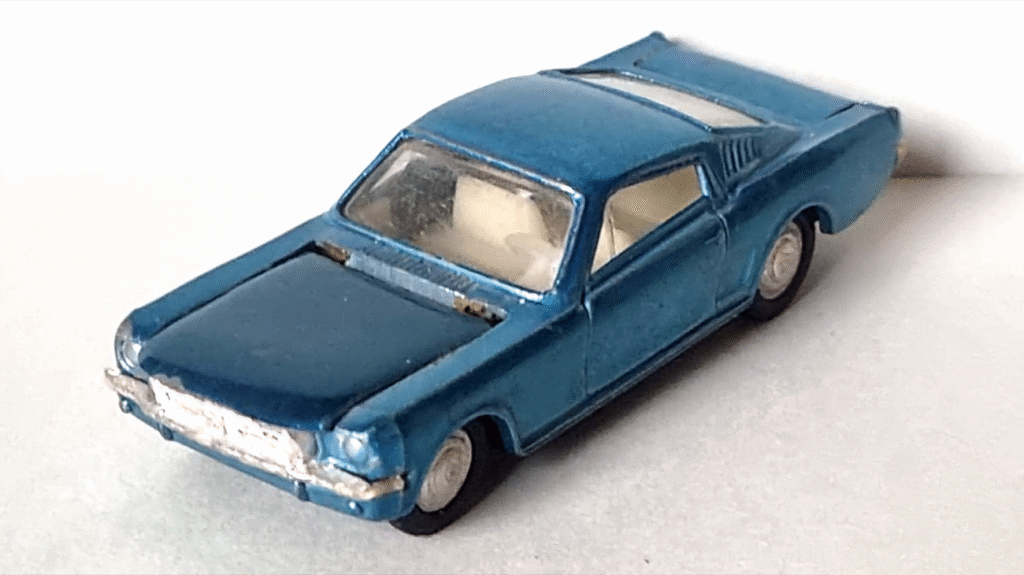



18 Mercedes Benz 250 SL
Similar to the Corvette, the Mercedes Benz 250 SL is shown with the same two wheel types.
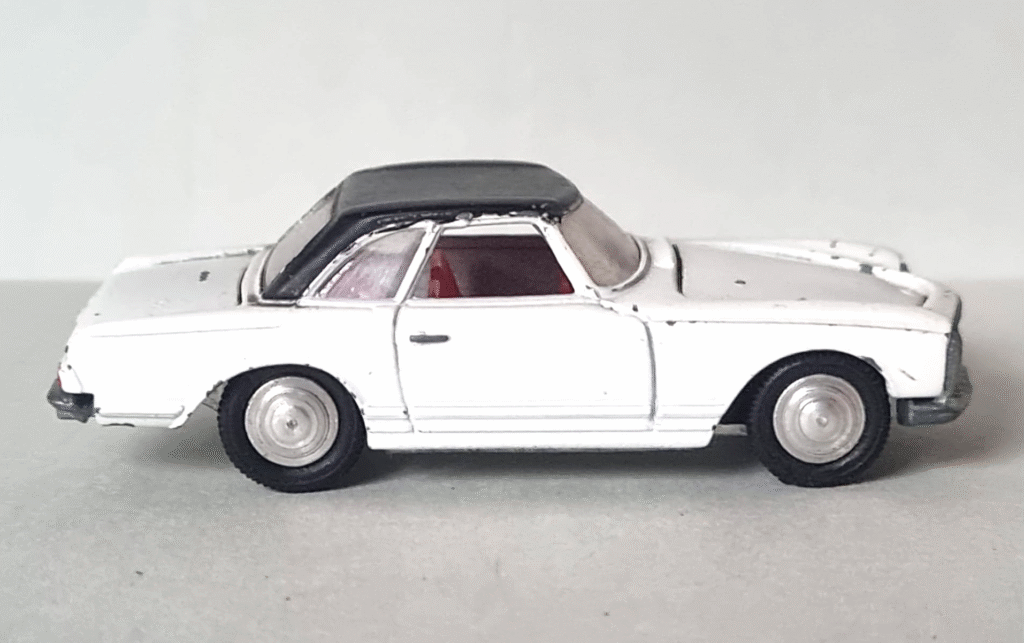

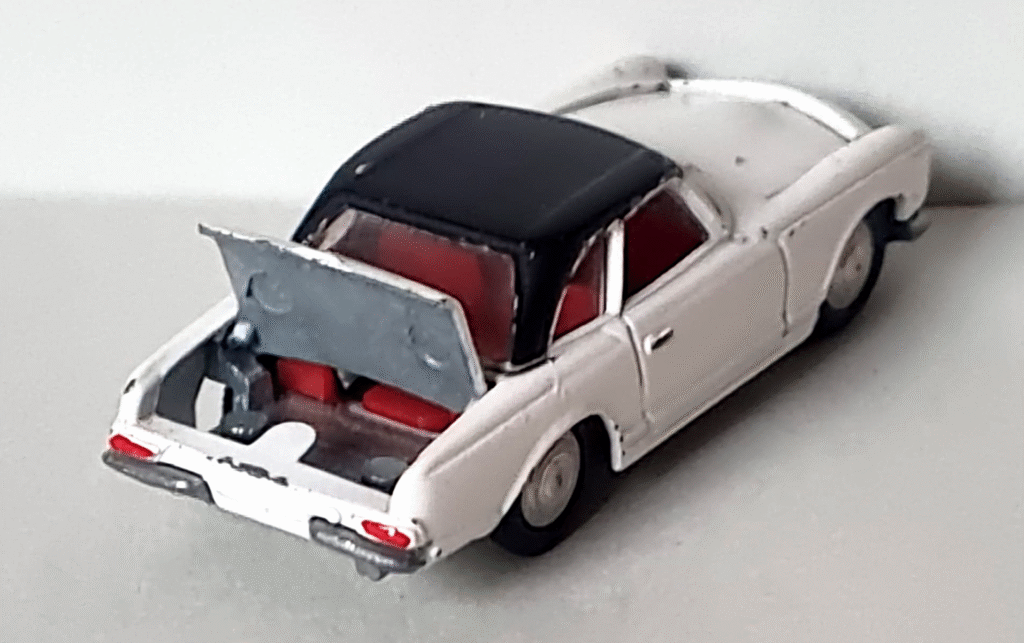

19 MGB



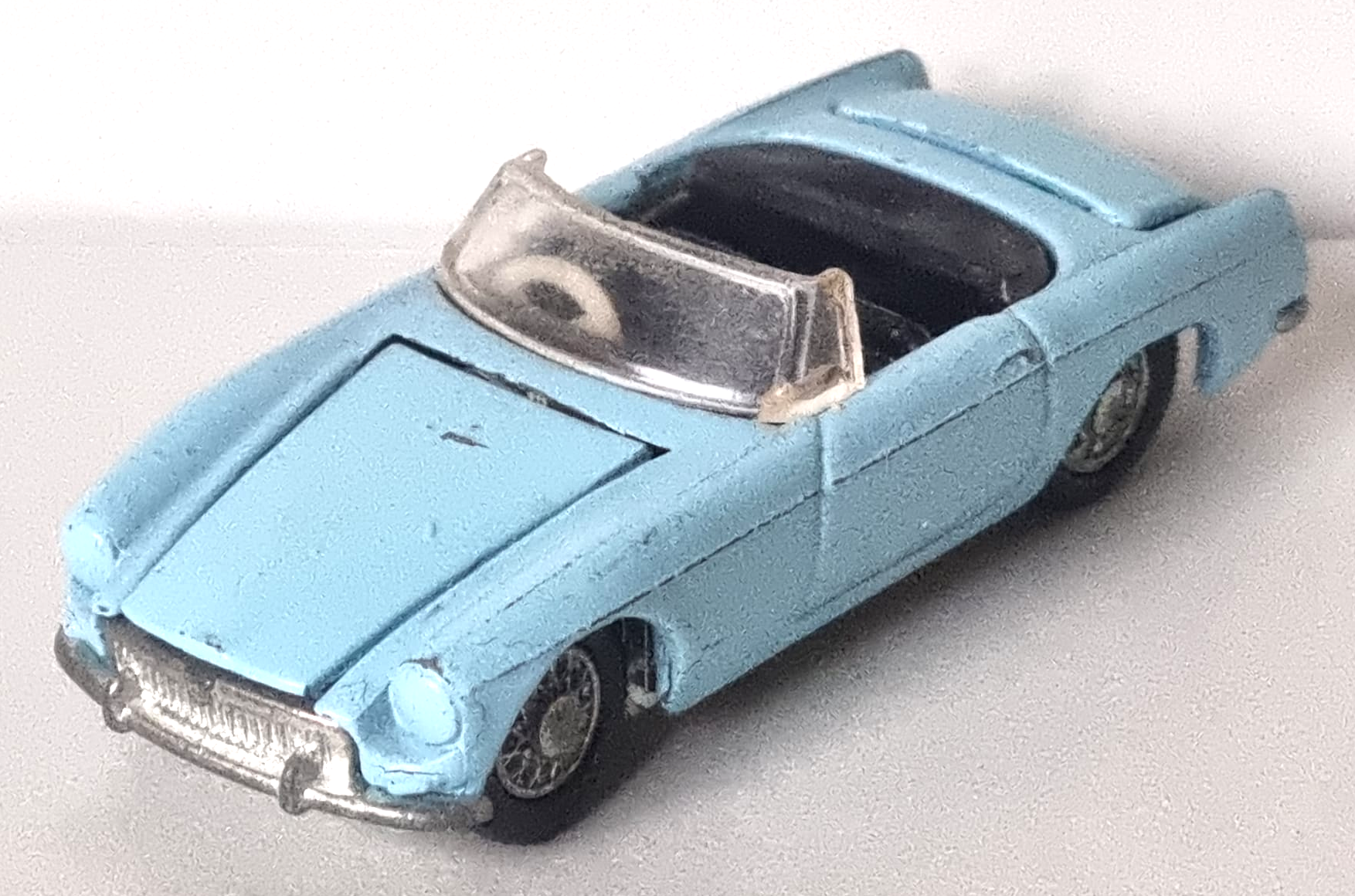
20 Cadillac Coupe De Ville
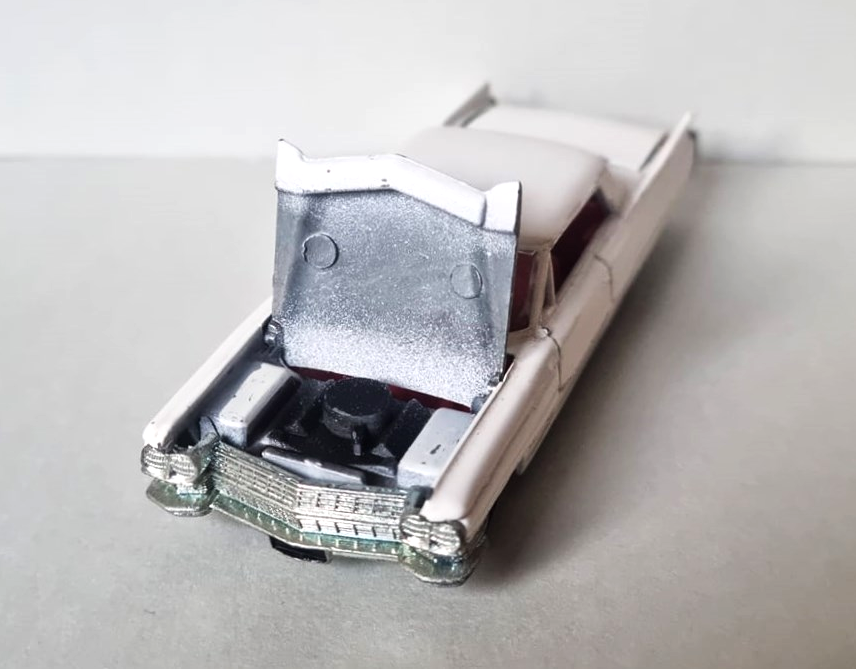

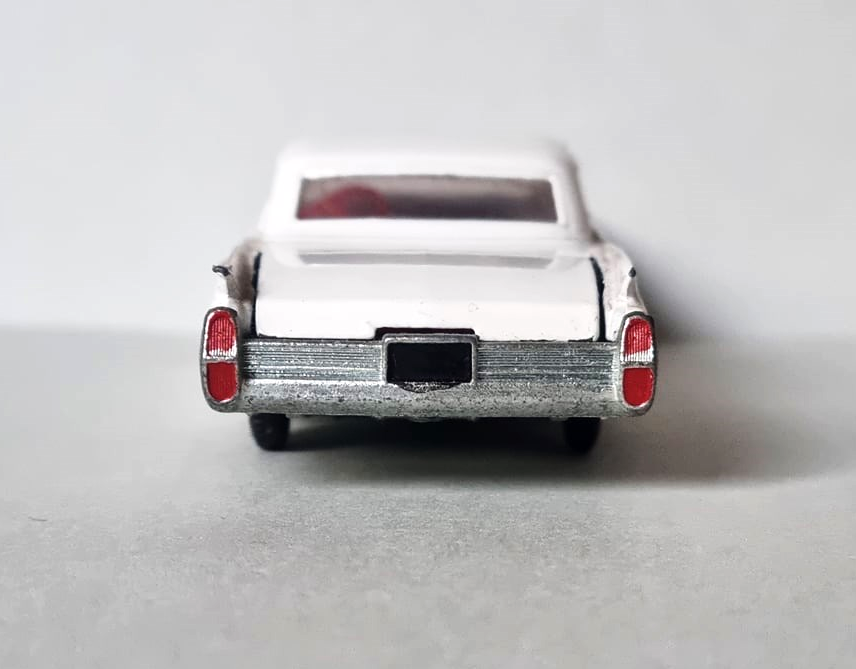

21 Fiat 2300 Station Wagon
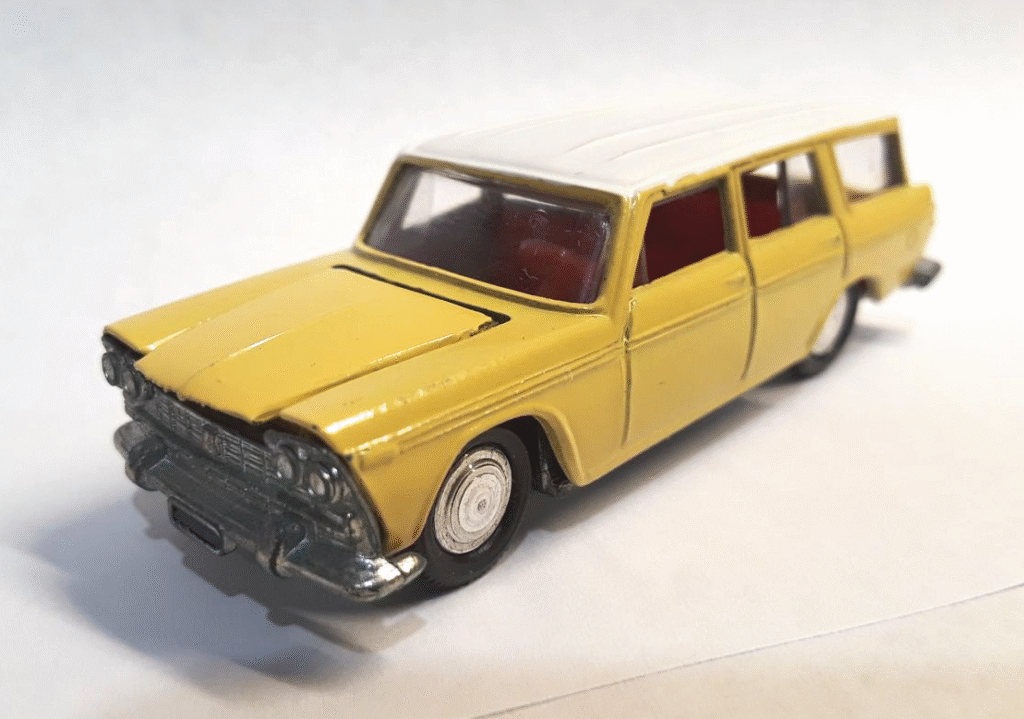


Images: Tick (Planet Diecast)

22 Oldsmobile Toronado
These photos of the Oldsmobile Toronado illustrate the metal fatigue (zinc pest) common to many Mini Dinkys.


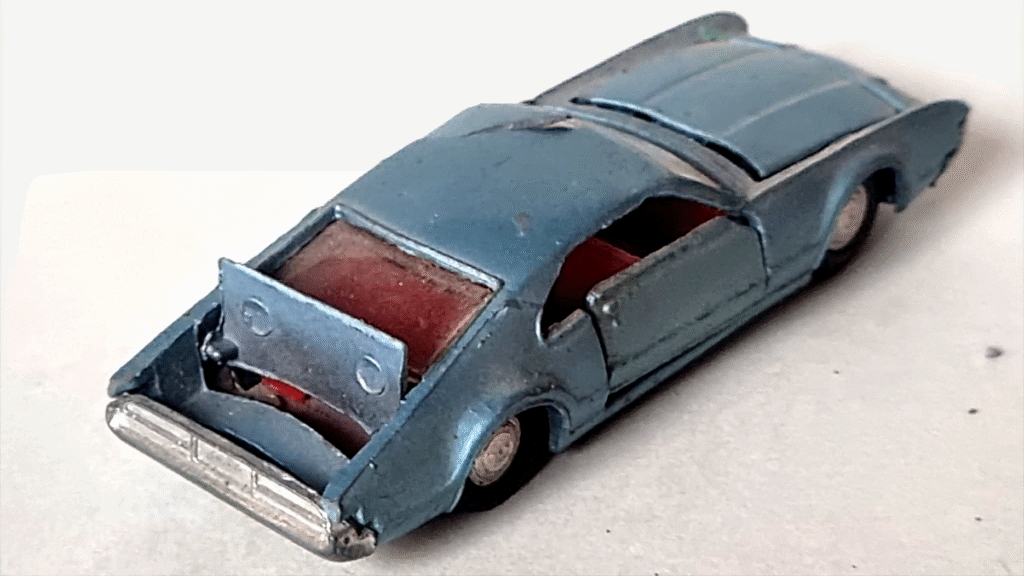

60 Cooper 3L Formula 1
The Best Box version is shown in HobbyDB. The blue 60 Cooper and green 61 Lotus are shown below.



61 Lotus 3L Formula 1
The Lotus baseplate is marked “Made in Holland” on the Mini Dinky also shown below. The Best Box version is pictured at Worthpoint.
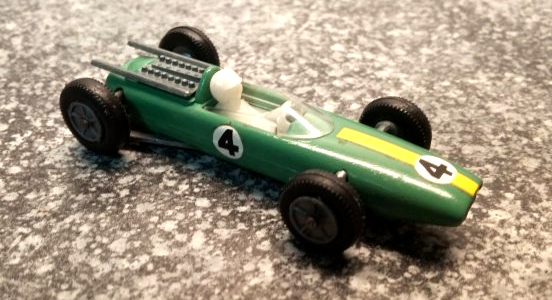

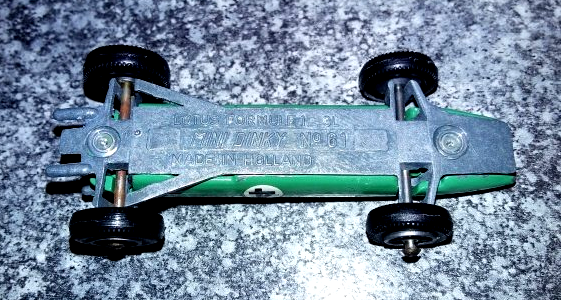
94 International Bulldozer

95 International Shovel


96 Payloader Shovel
The photos below show the payloader where the inside of the shovel has the engraved writing.
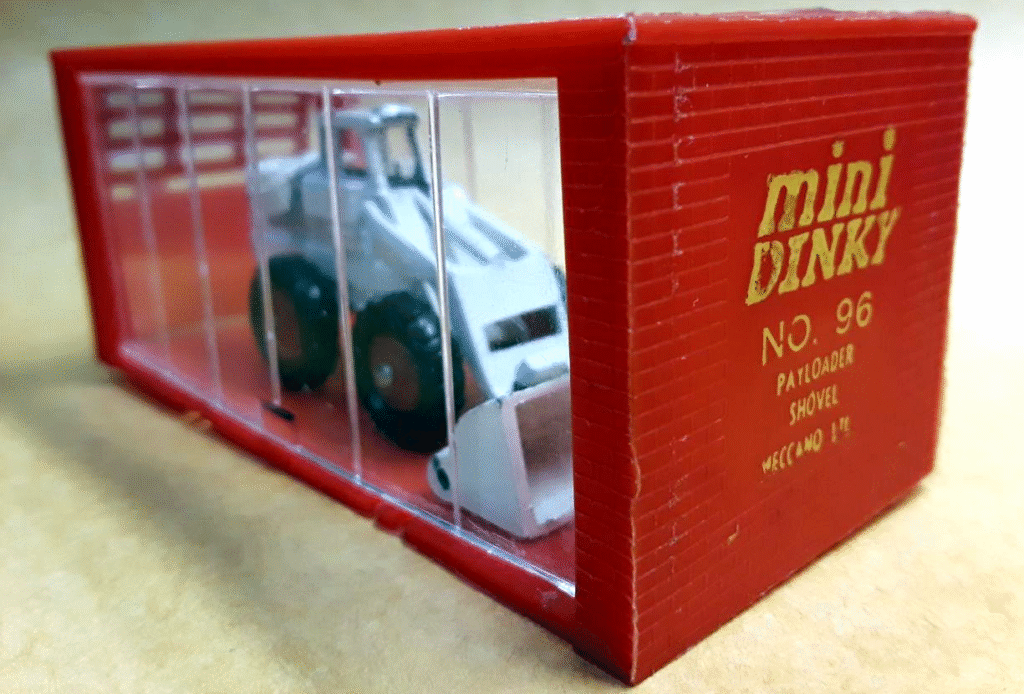
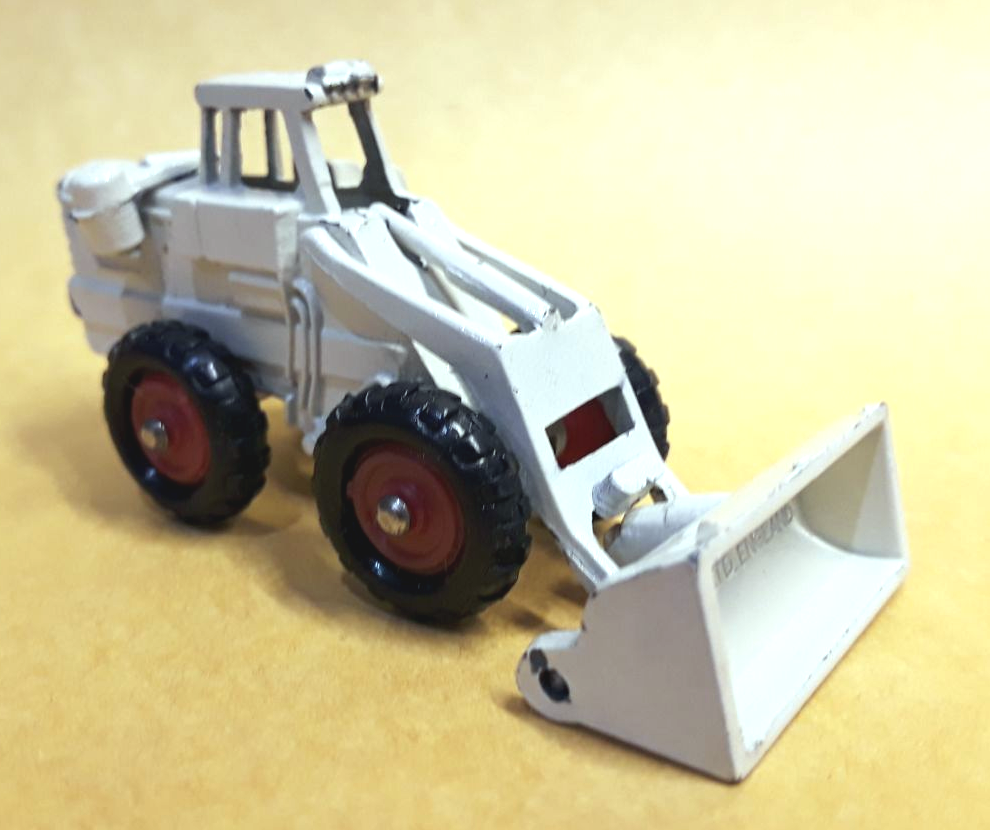
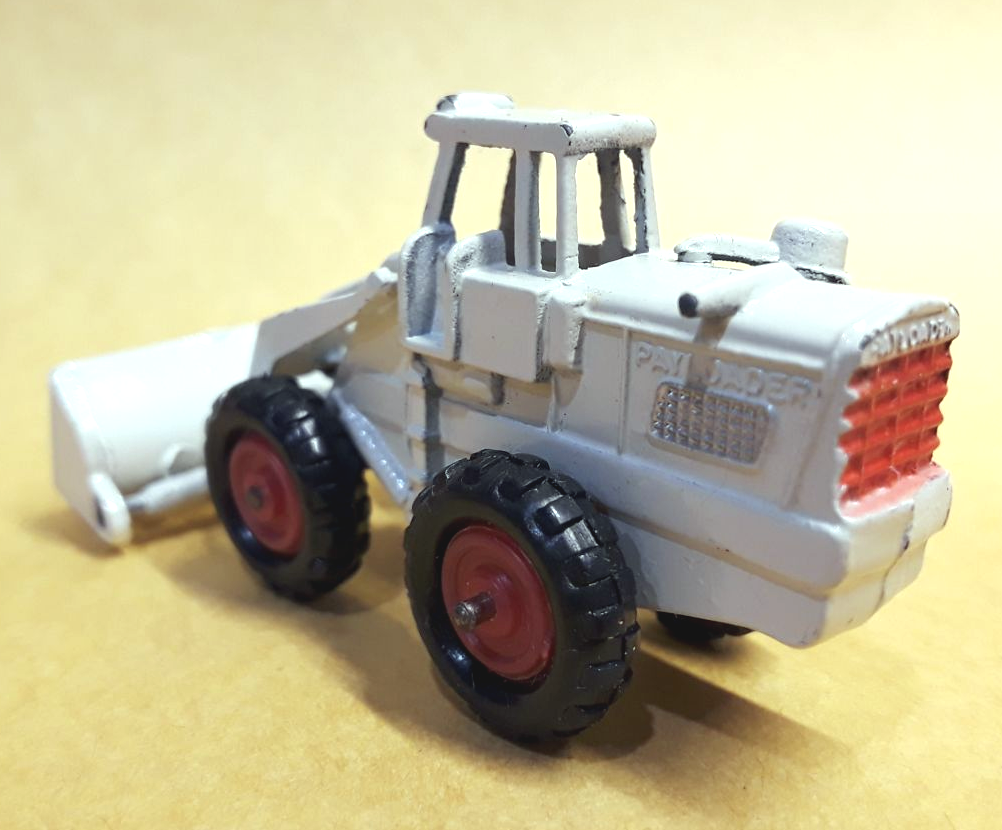
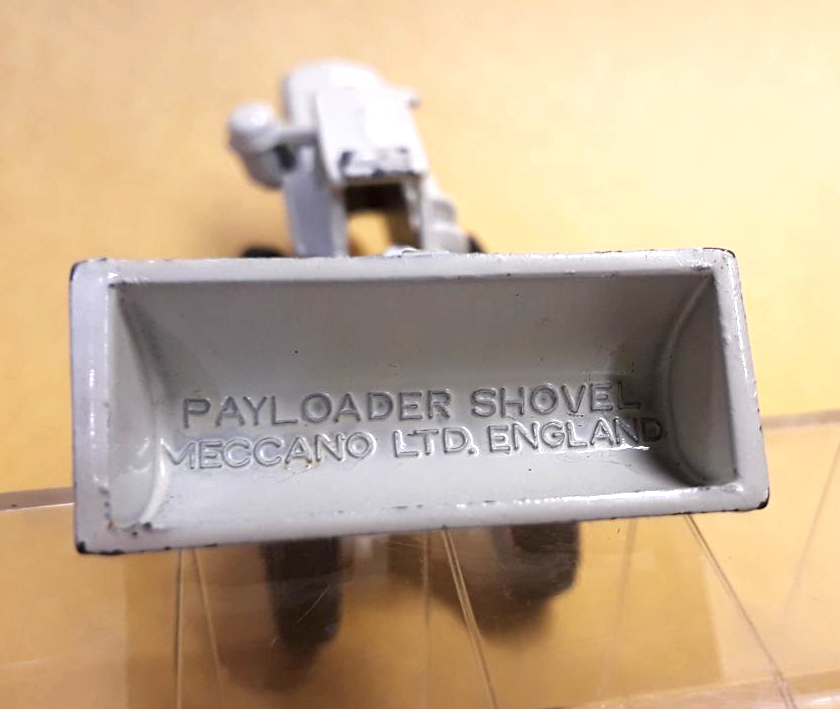
97 Euclid R‑40 Dump Truck
The base of the Euclid in this example doesn’t have “Mini Dinky” inscribed on it, so this instance was likely produced after Meccano and sold by Universal under various product names.


98 Michigan Scraper
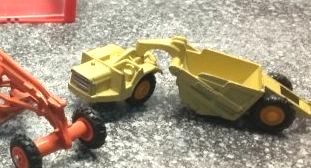

99 Caterpillar Grader
Peter Zimmerman reports in his online article Mini Dinky Construction Vehicles that the only construction equipment without “Meccano” or “Mini Dinky” marked on it is the Cat Grader.

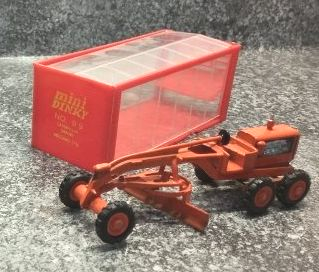
Street Car Wheels
There seems to be no established time line regards the fitment of the two types of wheel rims and tires. Then two wheel types were shown above for the Corvette and the 250 SL.
A small spun alloy type wheel rim similar to those fitted on the larger regular Dinky Toys cars has been seen fitted to a bare metal baseplate and a brightly plated baseplate, suggesting that when production was being done by Zyll Enterprises, stocks of these wheel rims were used on the newer versions of these models until the Mazac cast metal “Cross-Wire” wheel rim was used.
This means there are potentially Zyll made Mini Dinky models in existence with the brightly plated baseplates fitted with both types of wheel rims and tires.
Brochures
Here is the one brochure or catalog that has been found so far, from the US or Canada with tri-fold design. The front cover says “New” so this is probably from 1967 or 1968. It’s interesting to note that in the right photograph, there are all six construction equipment shown but only six cars (and no Formula 1). There are “18 More Cars Soon” mentioned on the reverse side, but only five of those were likely released.
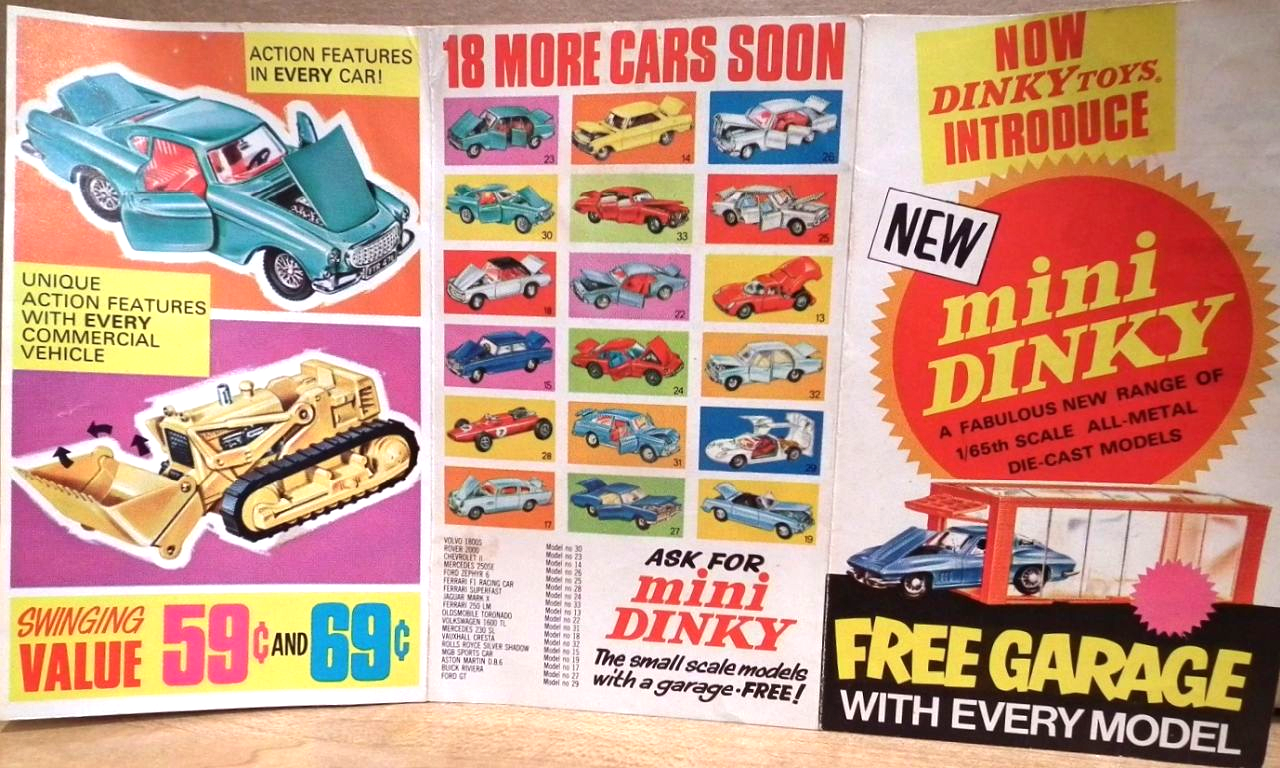

A Dinky sales list from Canada has been found that mentions Mini Dinky. Photos can be seen in Ian Cousin’s article, Dinky Toys of Liverpool, UK.
Prototypes
Several rough prototype castings were found in 2015 and sold on eBay. These probably came from a Meccano company employee. User ziggeystardust showed them on Planet Diecast back then. The castings included in the lot were:
- 17 Aston Martin DB6 — painted mid blue
- 21 Fiat 2300 Station Wagon — raw casting attached to sprue, yellow interior
- 29 Ford GT40
- 29 Ford GT40 – blueprints
- 31 Volkswagen Fastback 1600TL — baseplate
- 32 Vauxhall Cresta — body shell painted in light green
- 33 Jaguar Mark X — with resin baseplate
- 35 Rambler Ambasador
- 36 Ford Thunderbird — blueprints only
- 37 Chevrolet Camaro
Others probably not produced but listed in the brochure are:
- 15 Rolls Royce Silver Shadow — a fully finished example is in a private collection
- 23 Rover 2000
- 24 Ferrari Superfast — one unpainted body casting known
- 25 Ford Zephyr 6
- 26 Mercedes 250SE 4‑door
- 27 Buick Riviera
- 28 Ferrari F1 Racing Car
- 30 Volvo P1800
- 34 (Unknown model)
More Information Received
Since this article was originally published on Model Auto Review Online, several Letters to the Editor were received with more information on the Mini Dinky series.